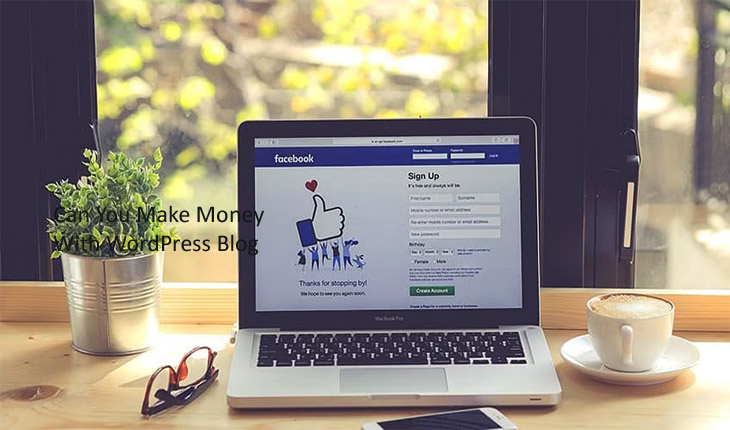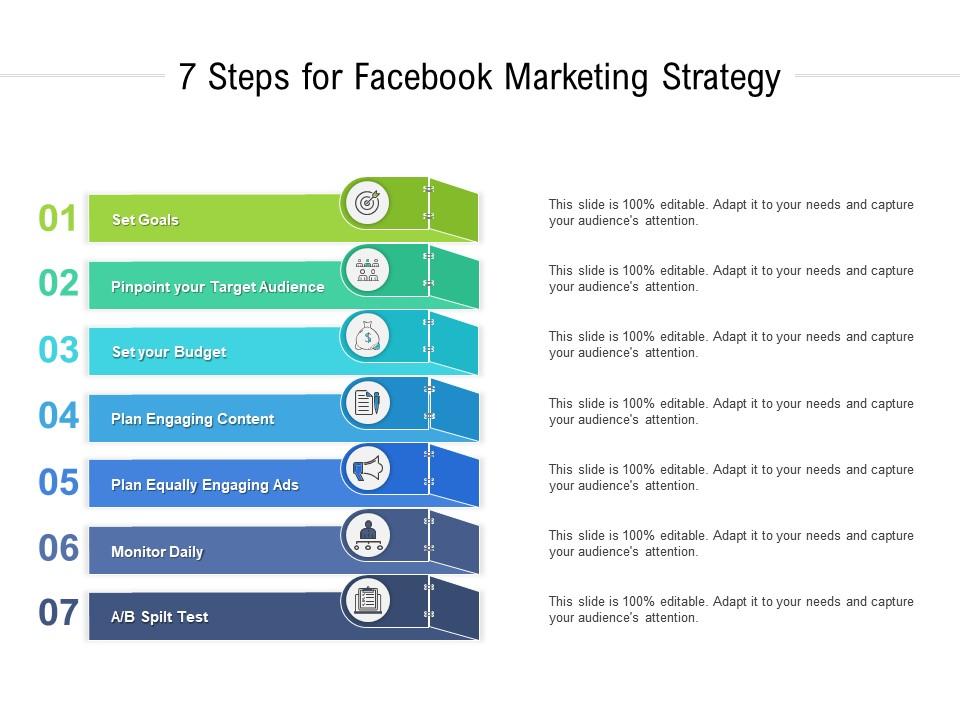Each month, approximately 2.98 billion individuals worldwide power up their computers or mobile devices to access Facebook.
This amounts to about a quarter of the global population, logging onto the same social media site daily.
It’s hard to believe that Mark Zuckerberg could have foreseen such widespread popularity when he introduced the initial version of what would eventually be recognized as the most popular social media platform in the world in 2003.
Nowadays, almost everyone is a Facebook user, and it has integrated into daily routines as seamlessly as watching TV.
For advertisers, this presents a significant chance to connect with and engage with new audiences.
However, simply creating a business page on Facebook and expecting to gain millions of followers isn’t enough. A strategic approach is necessary to fully leverage these chances and achieve the greatest results.
If you’re just starting out with Facebook marketing, this might seem overwhelming, but rest assured, it’s simpler than it appears.
What Is Facebook Marketing?

Facebook marketing is the use of the Facebook platform to promote products or services, engage with customers, and build brand awareness. It encompasses a variety of strategies, including creating compelling posts, running targeted ads,
and interacting with followers to foster a community around your brand. For example, a local coffee shop might share engaging photos of their seasonal drinks, run contests to increase engagement, and target ads to nearby residents to draw them in.
With over 2.8 billion active users, Facebook offers a unique opportunity for businesses to reach a diverse audience, analyse their engagement through insights, and tailor their approach to maximize impact. Ultimately, it’s about connecting authentically with your audience and turning those connections into loyal customers.
Paid Facebook marketing means using advertising campaigns within the platform to target people on the site and ideally, convert them into customers.
Organic marketing on Facebook occurs when you post content that your targets will find valuable, with the goal of increasing your following and engaging with your audience.
Why You Should Be Marketing On Facebook

Marketing on Facebook is essential because it provides unparalleled access to a vast audience and powerful tools for engagement. With billions of active users, you can reach potential customers from diverse demographics,
making it easier to target your ideal audience. For instance, a small boutique can showcase its latest collections through eye-catching visuals, engaging stories, and promotions tailored to local shoppers. Additionally,
Facebook’s advertising platform allows for detailed targeting based on interests, behaviors, and location, ensuring your message reaches the right people. Beyond ads, the platform fosters community building; you can interact with customers directly
, respond to inquiries, and gather valuable feedback. By marketing on Facebook, you not only boost brand awareness but also cultivate relationships that can turn casual browsers into loyal customers.
How To Set Up Facebook For Business
Setting up Facebook for business is a straightforward process that can significantly enhance your online presence. Start by creating a Facebook Business Page, which involves selecting
“Create a Page” from the menu and choosing a category that fits your business—like Local Business, Company, or Brand. Fill in essential details such as your business name, address, phone number, and a compelling description that highlights what you offer. Next,
upload a professional profile picture (like your logo) and a cover photo that reflects your brand’s personality. Once your page is live, populate it with engaging content—consider posting behind-the-scenes videos, customer testimonials, or product showcases.
Don’t forget to enable messaging so potential customers can easily reach out with questions. Finally, explore Facebook’s Insights tool to track engagement and adjust your strategy based on what resonates with your audience. By following these steps, you’ll create a vibrant online space that attracts and engages customers effectively.
How To Build A Facebook Marketing Strategy
Building a Facebook marketing strategy starts with defining your goals. Are you looking to increase brand awareness, drive sales, or grow your community?
Once you’ve established your objectives, research your target audience to understand their interests and behaviors on the platform. Create a content calendar to plan and schedule diverse posts—mix engaging visuals, informative articles,
and interactive polls to keep your audience entertained and informed. For instance, a local café could share daily specials, customer spotlights, and behind-the-scenes looks at their coffee-making process. Invest in Facebook Ads to boost your reach,
using detailed targeting to ensure the right people see your content. Regularly analyze your performance using Facebook Insights; track metrics like engagement rates and conversions to see what works and adjust your strategy accordingly.
By staying flexible and responsive to your audience’s needs, you’ll create a dynamic Facebook marketing strategy that drives meaningful results.
Types Of Facebook Posts For Marketing
When it comes to Facebook marketing, variety is key to keeping your audience engaged. Start with eye-catching visuals—posts featuring high-quality images or videos can dramatically boost engagement;
for example, an online clothing store might showcase their latest collection through striking outfit photos. User-generated content, like customer photos or testimonials, not only builds community but also enhances credibility.
Polls and questions are great for sparking interaction, as they invite followers to share their opinions—imagine a bakery asking, “What’s your favorite cake flavor?” to generate buzz. Live videos offer an authentic glimpse into your business,
whether it’s a behind-the-scenes tour or a Q&A session, helping to foster a deeper connection with your audience. Don’t forget about sharing valuable content, such as tips, guides, or industry news, which positions your brand as an authority.
By mixing these types of posts, you can create a dynamic feed that keeps your audience coming back for more!
Facebook Ad Types
Facebook offers a variety of ad types, each designed to achieve specific marketing goals and engage audiences in unique ways. Image ads are a classic choice, perfect for showcasing a product or service with a captivating photo; for instance,
a skincare brand might use a close-up image of a glowing model applying their latest moisturizer. Video ads are increasingly popular, allowing brands to tell a story or demonstrate a product in action—think of a fitness studio sharing a quick
workout routine to entice potential members. Carousel ads enable businesses to showcase multiple images or videos within a single ad, making them ideal for highlighting a range of products or services; for example, an online retailer
can feature different styles of shoes in one post. Collection ads take it a step further by combining visuals and a product catalog,
allowing users to browse items easily. Lastly, dynamic ads automatically tailor content to individual users based on their interactions with your website, creating a personalized shopping experience. By leveraging these diverse ad formats, brands can effectively capture attention and drive conversions on Facebook!
At the moment, there are four main types of ads on the platform:
Image Ads
These are static ads in JPG or PNG format. They should include a headline of up to 40 characters and the main text of 125 characters.
You also have a link description area which should be used for a clear and succinct CTA.
Image ads are easy to set up and work well for driving traffic to your website.
For a list of best practices for this ad format, click here.
Video Ads
Facebook video ads are a great way to boost your brand and don’t require expensive recording equipment or software. You can record these spots using your phone and there are a number of free editing apps that can help you.
Video ads can be placed in-stream (the short commercials that are shown before a video your target wants to watch), in-feed, or in Stories.
As a general rule of thumb, they should be under two minutes long and have an attention grabber within the first three seconds.
For more video best practices, click here.
Carousel Ads
Carousel ads combine multiple videos and images into a single ad, which is a great way to improve your chances of conversion.
They tend to work best for ecommerce brands, as they allow you to showcase multiple products or angles of a single product in one ad.
When Not To Use Facebook Ads
While Facebook ads can be a powerful tool for many businesses, there are specific scenarios where they might not be the best choice.
For instance, if your target audience is primarily composed of older demographics, and you’ve found that they engage more on platforms like LinkedIn, investing in Facebook ads may yield limited results. Similarly, if your product or service has a very niche market with a small audience,
the cost of ad spend might outweigh the potential returns; consider a bespoke luxury service that appeals to only a few individuals—advertising broadly on Facebook might not be effective. Additionally, if your marketing budget is tight,
it could be wiser to focus on organic reach strategies, such as community engagement or content marketing, rather than paying for ads.
Lastly, if your business is in the early stages and you haven’t yet established a clear brand message or value proposition, diving into Facebook ads could lead to wasted resources; it’s often better to refine your brand identity first. In these contexts, exploring alternative marketing methods might be more beneficial.
How To Create Great Facebook Campaigns
Creating great Facebook campaigns starts with a clear understanding of your goals and audience. Begin by defining what you want to achieve—whether it’s increasing brand awareness, generating leads, or driving sales. Next,
delve into audience research using Facebook’s Audience Insights tool to pinpoint demographics, interests, and behaviors of your target market. Craft engaging ad content that resonates with them; for example, if you’re promoting a local coffee shop,
use vibrant images of your brews and enticing captions like, “Warm up with our seasonal pumpkin spice latte!” A/B testing different ad formats—like videos versus carousel ads—can help you identify what grabs attention best.
Ensure your ad copy is concise yet compelling, and always include a strong call to action, such as “Shop Now” or “Learn More.” Finally, regularly monitor and analyze your campaign’s performance through Facebook Ads Manager,
allowing you to tweak strategies in real-time and maximize your return on investment. By combining creativity with data-driven insights, you can create Facebook campaigns that not only engage your audience but also drive results. Facebook Marketing Guide Complete Strategy Guide for 2024

